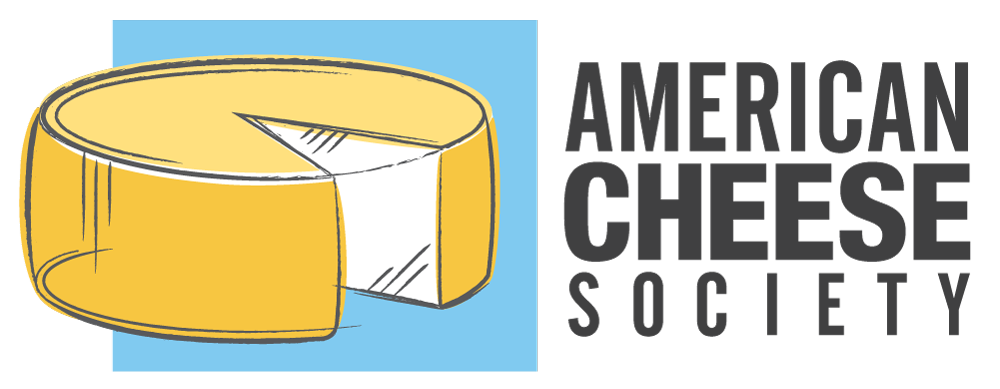I knew I wanted to read Heather Paxson’s book, The Life of Cheese: Crafting Food and Value in America, as soon as I heard about her. An MIT anthropologist taking a serious look at the cheese world! But I had no idea how much I would enjoy it, or how long it would take to digest it, or that I would feel, while reading it, how Paxson much more astutely puts into words the vague, unformed notions I’ve had on my own journey through the cheese world.
I, perhaps crazily, selected The Life of Cheese as my 3rd book on my new book review segment on Heritage Radio Network’s “Cutting the Curd”. Not only did I have to read with a deadline looming, I had to come up with some interesting and non-idiotic questions in order to conduct an on-air and in-person interview with Dr. Paxson herself.
The book is a dense and satisfying read. It made me feel like I was back in graduate school, having to underline and even take margin notes, as I read. In the book, different aspects of the artisanal cheese world are studied and interpreted from a cultural and an economic perspective. What seemed to be the best part, overall, was that Paxson is taking the world of cheese so seriously, and describing, and therefore proving, (anthropologically) why it feels so special to those of us in this world. But Paxson’s not swept off her feet; she also sees some of our delusions and difficulties. In the end, she hones in on the meaning of our mission.
The research Paxson conducted for the project took place via many years of in-depth visits and interviews with cheesemakers, including Andy and Mateo Kehler of the Cellars at Jasper Hill in Vermont (full disclosure: I work for them part time), Joe Widmer of Widmer’s Cheese Cellars in Wisconsin, and Mary Keehn of Cypress Grove Chevre in California. She also attended her first American Cheese Society Conference in Louisville in 2005, and many subsequent conferences, as well as cheese festivals in California, Seattle, and New England.
To give the reader a taste for what is discussed in The Life of Cheese, here is an example of one small term: “counter industrial agricultural remediation”. What Paxson is referring to is how artisanal cheesemakers are simultaneously breaking new ground in defining their product as small batch, handmade, farmstead, etc., while at the same time going back to caring for the land and rehabilitating old farmland and regions, hoping to make them thrive economically. She focuses on values which cheesemakers tacitly or consciously embrace: the goal of making good cheese for the marketplace also creates a productive and meaningful life for the cheesemaker. This life also provides what may have been absent in other more lucrative, citified, or intellectual endeavors. Paxson notes that the farmstead or small factory cheesemaker lifestyle perpetuates many traditional “American” values such as “autonomy and self-determination, belief in the virtue (and reward) of hard work, a communitarian ethos of neighborliness, concern for the natural environment, and faith in future progress.”
One of the topics Paxson explores (in a timely fashion since ACS’s 2013 Conference was in Wisconsin), is the many similarities between third generation “factory” cheesemakers in Wisconsin, and the newer artisanal or farmstead producers on both coasts. I, for one, have been a bit slow on the uptake in figuring out the Wisconsin cheese scene: big vs. small, industrial vs. artisan, old vs. new, aesthetic vs. technical. I realized my categories of thinking were not always adequate when applied to cheese in the Midwest. Paxson visits and discusses at length how, with different vocabulary and family history, many Wisconsin and Vermont cheesemakers are sharing the same values and goals. Often it’s our cultural snobbishness (my term, not hers), that gets in the way of our appreciating ALL great American cheeses.
Another interesting topic in the book, one which I only recently considered, was the history of cheesemaking in America. In particular, how cheesemaking began as one of many farm chores, usually performed by the wife, serving the practical goal of conserving resources and filling the pantry. Some farm women may have enjoyed or excelled at the chore, but it was primarily a necessity. The initial concept of pooling milk and having fewer people responsible for cheesemaking was smart progress, and also offered a rural factory job for men. Viewing the whole process of cheesemaking in typical Paxson lingo, she states, “The meaning of making cheese by hand has moved from being a chore to a skilled trade to an expressive endeavor.”
What is truly amazing about Paxson’s study is that the topics discussed above are just the tiniest tip of the iceberg! Every chapter, indeed every page, is packed with a fascinating view of the industry based on her unique understanding, and then she takes it descriptively one step further.
Book reviewed by Diane Stemple. Diane works for Cellars at Jasper Hill, in addition to reviewing books on Heritage Radio Network’s “Cutting the Curd.” Diane is also a clinical psychologist with a private practice in Port Washington and Brooklyn, NY.
